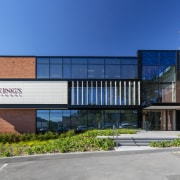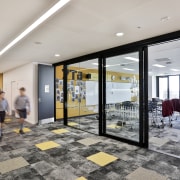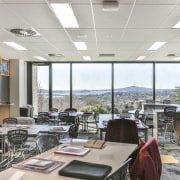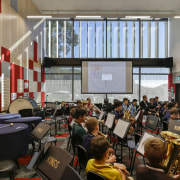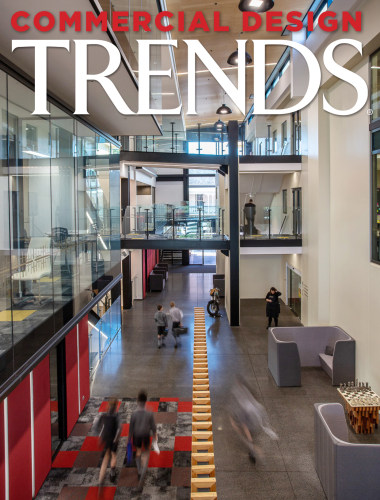New classroom and music studio building merges individual classes and open-plan learning environments
The welcoming new King’s School Centennial Building looks to its future with fresh architectural thinking in terms of student learning, cross-campus connections and pride of place

Open-plan, young children learning facilitieshave many advantages, but close connection to the teacher and a strong sense of place aren’t always among them. The King’s School Centennial Building offers the school open, flexible spaces but not at the expense of individual classrooms. Perhaps the key word in terms of school design isn’t so much openness as flexibility.
The new Centennial Building by architects Warren and Mahoney presents amajor new facility at the heart of the school. It brings the school an additional 5000m² of large, light-filled classrooms, music studios and breakout areas.
Headmaster Tony Sissons says that while there were many requirements to consider, core to the brief to Warren and Mahoney was the importance of human relationships in a school environment – particularly those between student and teacher.
“I’ve always believed students need to maintain a close relationship with the classroom teacher and have a strong connection with a single class. I don’t believe the trend towards open-plan learning environments is beneficial to young children’s learning.”
“This four-level, state-of-the-art flagship building at the heart of our school allows a flow from large light-filled individual classrooms, which provide a sense of place, into open flexible spaces,” says Sissons.
“The design offers the best of both worlds – it continues to offer personalised teaching in a classroom setting but also allows students to work collaboratively in groups outside the classroom.”
The central location, scale and brief for the Centennial Building provided the opportunity to both create optimal learning environments and improve the connectivity of the school, says Warren and Mahoney project architect Sarah Hewlett-Diprose.
The building interior is crisscrossed by a central atrium and a pedestrian internal street running the length of the building. Bridges and stairs connect areas across these three level-high accessways. From the ground floor up, the more flexible open-plan spaces front onto the street, feeding off and adding to the dynamism and energy of the space. State of the art natural lighting design and acoustics are features of the building, and the latter helps mitigate noise levels within the open spaces.
“Acoustic performance was a key functional criteria for material selection in both the typical classrooms / breakout areas and specialist music rooms,” says Hewlett-Diprose. “For example, 50mm thick quiet-space panels are utilised throughout the internal street in conjunction with acoustic ceiling tiles. This was in recognition of the proximity of noisier more collaborative focused learning environments and the hard concrete and brick surfaces of adjoining existing buildings.
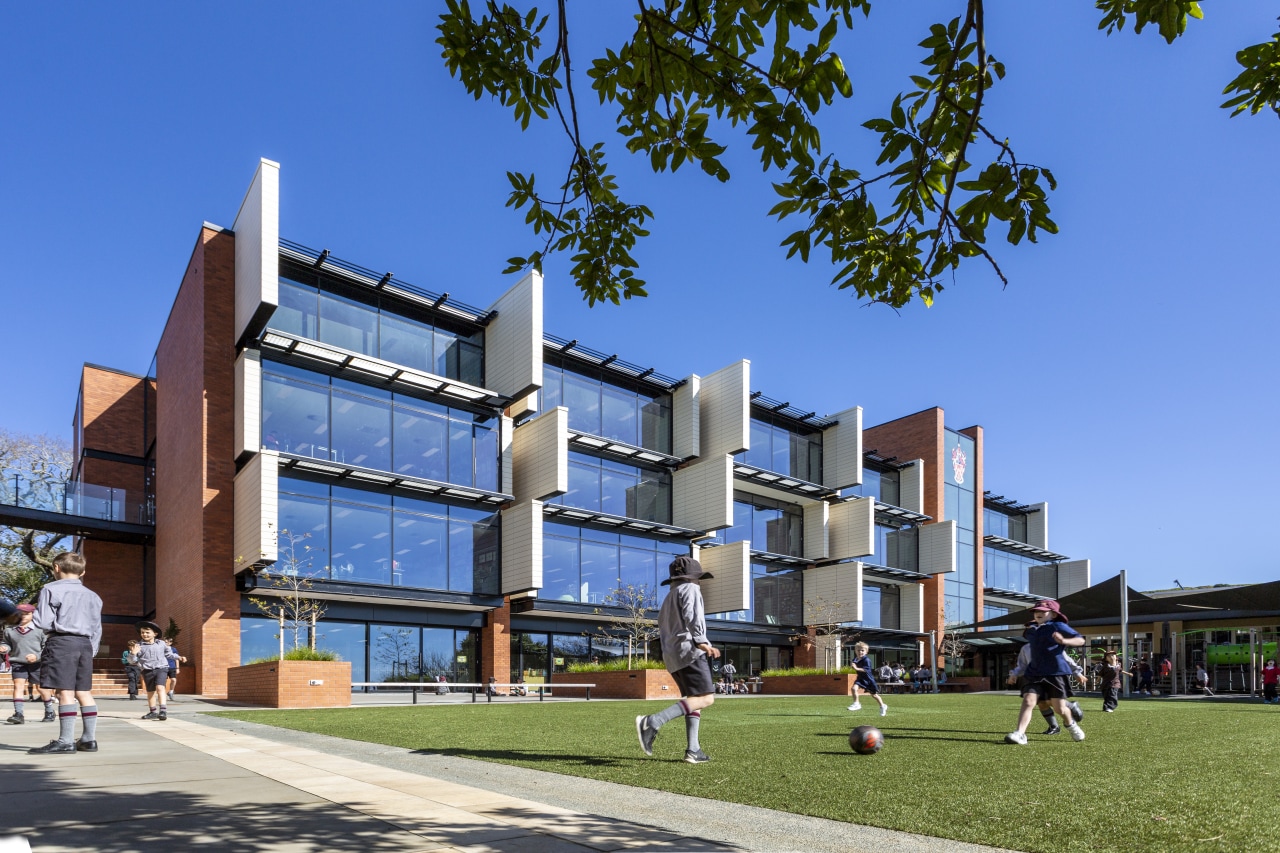
Both the atrium and the internal street play important roles in the wider school environment, too. The atrium entry creates a new formal entry to the school and is highly visible from Portland Road.
“By providing a clear new public address, the building has a transparent school-to-community connection,” says Hewlett-Diprose. “It offers permeability into the life of the school through street-facing architecture which is clear and inviting.”
There are no fences separating the community from the Portland road entry, rather there is a series of concrete platforms and seats with integrated planting, the design navigating around an existing mature Pohutakawa tree, inviting the community in.
Construction of the Centennial Building provided the opportunity to return the adjacent Towers building to its original design, demolishing a late addition that had linked across to the Hanna building, which was replaced as part of this project. Now on arrival at the school’s main entry, staff, students and visitors encounter new site lines between buildings which had previously abutted one another.
The history of the site is acknowledged with reference to the original Hanna building through the materiality and modulation of the north elevation of the Centennial Building, the installation of the original Hanna clock in the centre of the new building and finally the use of recycled kauri rafters to form the timber fins that provide a degree of enclosure to breakout spaces within the internal street.
“The existing campus has a particular arrangement and massing that confers a sense of ‘historical gravitas’ across the site,” says Hewlett-Diprose. “Our design approach has been to reinterpret the sense of permanence, clarity and order in a less formal way. The architecture of the new facility provides a clear structural rhythm that reinterprets the order of the wider King’s School built environment.”
And now, for the first time, all the school’s buildings are well connected. This was achieved by the use of bridges linking the new facility to existing buildings, some extending the lines of its internal street.

“The Centennial Building also reflects the materiality of the existing campus and acknowledges the sensitive residential environment through its modular arrangement and scale of materials – effectively breaking down the large building into smaller scale elements,” says Hewlett-Diprose. “The exterior material palette of red brick, high performance glass, white terracotta cladding and baguettes also form a highly durable and low maintenance envelope.”
In response to its wider surroundings, ceramic frit glass is utilised in strategic areas to provide privacy to residential neighbours.
And the building is as enduring in terms of looks as it is in material durability – the former achieved through visual simplicity and order in a design where every element has a specific functional role. For example, the dynamic terracotta clad fins to the north elevation provide shading from the westerly sun and acoustic separation between adjacent classrooms when external windows are open. The proud, north-facing fins also symbolise the building’s outward looking focus.
In another instance of the building’s merger of form and function, the mesh service gantries double as shading for the extensive northern glazing. On the top floor – where shading is not provided by the modulation of floors above or service gantries – powder-coated aluminium louvres provide shading.
“Non-functional decoration is eschewed in favour of sculptural strength, and concessions to current ‘design fashion’ were also avoided,” says Hewlett-Diprose. “It is important that while the Centennial Building is inevitably of its time, it doesn’t take on a stylistic language that will become dated down the track.”
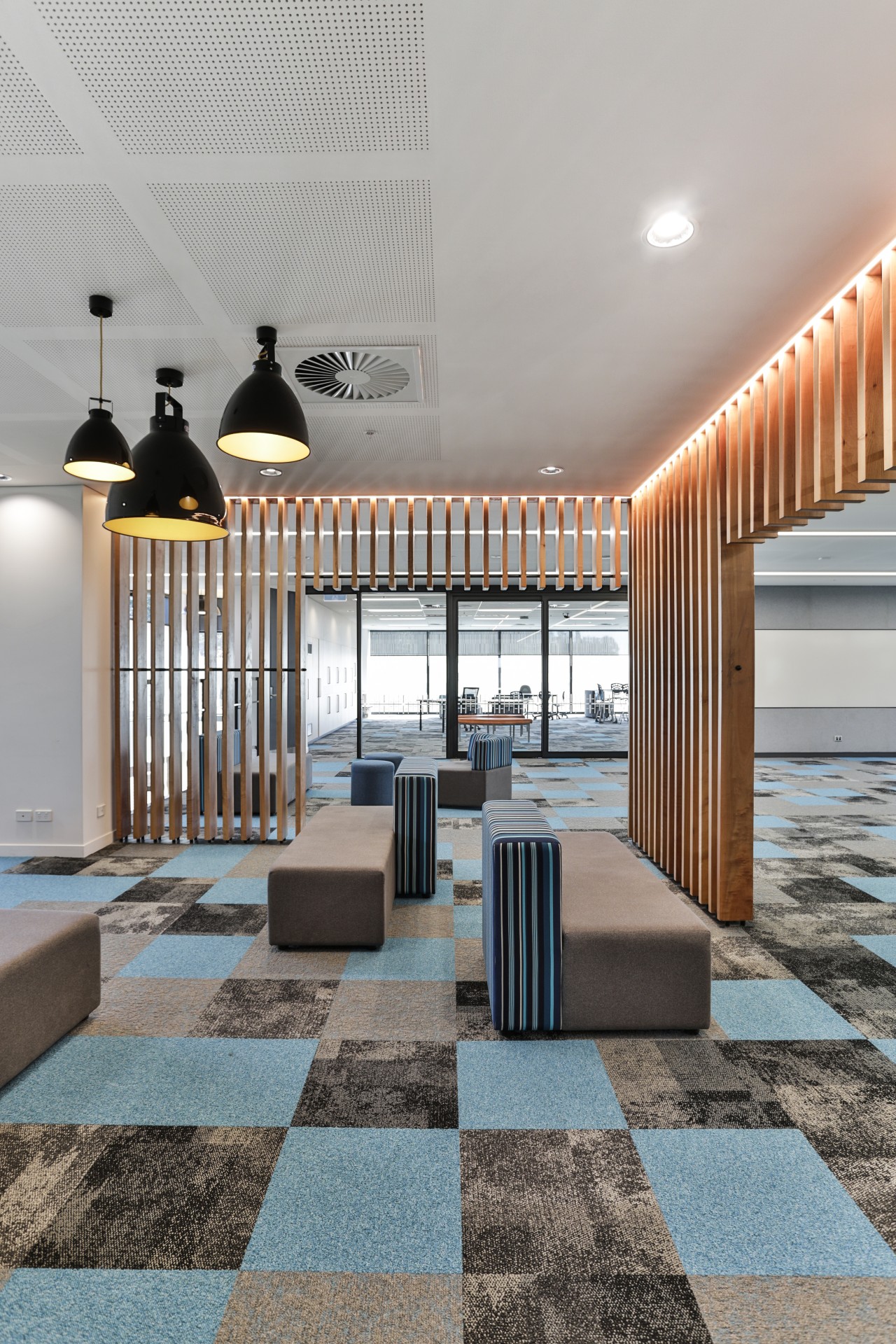
In terms of internal orientation, colour has been utilised throughout the building as a wayfinding tool, which has proved particularly beneficial for the younger students. Each floor has its own feature colour, utilised in both flooring and acoustic panel colour selection: green on the ground level, maroon at entry level, gold on the next floor up, and blue on the top. The carpet pattern, in particular the extensive feature colour areas, reflect the increased collaboration that occurs in the more informal transitional spaces.
“There is no doubt that the building has brought our students many educational benefits,” says headmaster Tony Sissons. “The most obvious day-to-day benefit is the more considered, dynamic design of teaching spaces as well as the very best of today’s technology in terms of air flow, natural light, and acoustic design.
“The Centennial Building has certainly created an exceptional teaching and learning environment.”
Credit list
Project
Civil, mechanical, structural and electrical engineer, project manager and fire consultant
Acoustic engineer
Cladding
Louvres
Secondary roof
Floors
Classroom/display walls
Breakout area walls
Paints
Heating
Blind
Architect
Quantity surveyor
Landscaping
Terracotta fins
Main roof
Glazing system
Feature flooring
Music classroom walls
Ceiling treatments
Lighting
Classroom furniture
Story by: Charles Moxham
Photography by: Jamie Cobel
Home kitchen bathroom commercial design
Walk this way – garden pathways to lead your thinking
From farmhouse to farmstead
Bigger or smaller?
Commercial Design Trends Vol. 34/2C
Whether you’re travelling for work or pleasure, your hotel experience can either make or break your trip. Our market rep...
Read More